#Kavala city
Explore tagged Tumblr posts
Text

Door in Kavala,Greece
#door#colours#teal#orange#Kavala city#Kavala#Macedonia#Eastern Macedonia#Greece#old door#wooden door#wood
5 notes
·
View notes
Text
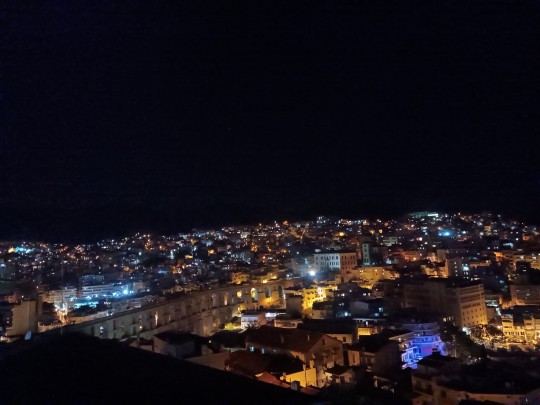
Εγώ, εσύ και αυτή η θέα...
19 notes
·
View notes
Text

#kavala #city #greece
📸 @bart_ferdynus
#greeksummer #summer2023
16 notes
·
View notes
Text
yeah I wish the description was clearer about this. even just like “you’ve lived in London your whole life but this is a new city now” idk I’m not a game marketer. something to clarify that the game works on the assumption that the player is english.
i'm just. i know i should give mask another chance now that the pacing is fixed but im still kinda bitter over things.
Like i know I already made a post on it but the literal description of the game makes it seem like you can pick who you are!!! ‘who were you before the Fall? Who will you be now?’ sounds nice, but the reality is ‘who will you be’ can only be christian and english. This was an issue I had hoped wouldn’t be carried over as much from Fallen London, but the capability for the suspension of disbelief of being anything else is worse here due to the dialogue. I understand limiting the scope of writing if you feel you are unable to write anything else properly, but this needs to be specified at least in the backgrounds or the description.
It is always disheartening to be presented with a game that aims to advertise its option of playing as ‘yourself’, which then turns with the expectation of only one type of person. It is a shame the game will not let you be of an Irish, Jewish, Scottish, etc. background, with the added aspect of those types of characters being present in the game making it all more confounding. Having a diverse cast does not feel as meaningful when the game doesn’t let you, as the player, be a character of your own background.
#playing as alexandria is especially strange because she is definitely not english#her father is mixed greek/swahili. her mother is haitian. she grew up in kavala (port city in greece).#like i don’t expect the game to cover all of that but an opportunity to bond with harjit over not being from here would be nice#motr#idk man. i picked dockworker’s child but alexandria is not from london’s docks!! he is from kavala.#i wanted him to talk with harjit about adjusting to normal london and then having to deal with this… hhhh.
28 notes
·
View notes
Text

The Marble Head of Apollo Unearthed in Greece
The excavation, carried out by a group of students of the Aristotle University of Thessaloniki in the archaeological site of Philippi Kavala, brought to light important findings. Among other things, they discovered a rare head of Apollo dating back to the 2nd or early 3rd century AD.
The statue dates back to the 2nd or early 3rd century AD and it probably adorned an ancient fountain.
Natalia Poulos, Professor of Byzantine Archaeology, led the excavation, which included fifteen students from the Aristotle University of Thessaloniki (11 undergraduates, 2 master’s, and 2 PhD candidates), Assistant Docent Anastasios Tantsis, and Professor Emeritus of Byzantine Archaeology Aristotle Mendzo.
Archaeologists say, this year the excavation continued east of the southern main road (decumanus) at the point where it meets the northern axis of the city (the so-called “Egnatia”). The continuation of the marble-paved road was revealed, on the surface of which a coin (bronze phyllis) of the emperor Leo VI (886-912) was found, which helps to determine the duration of the road’s use. At the point where the two streets converge, a widening (square) seems to have been formed, dominated by a richly decorated building.
Archaeologists say evidence from last year’s excavations leads them to assume it was a fountain. The findings of this year’s research confirm this view and help them better understand its shape and function.

The research of 2022 brought to light part of the rich decoration of the fountain with the most impressive statue depicting Hercules as a boy with a young body.
The recent excavation (2023) revealed the head of another statue: it belongs to a figure of an ageneous man with a rich crown topped by a laurel leaf wreath. This beautiful head seems to belong to a statue of the god Apollo. Like the statue of Hercules, it dates from the 2nd or early 3rd century AD and probably adorned the fountain, which took its final form in the 8th to 9th centuries.
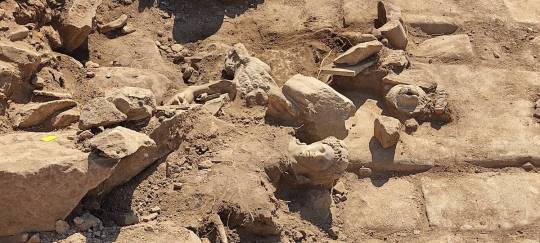
In classical Greek and Roman religion and mythology, Apollo is one of the Olympian gods. He is revered as a god of poetry, the Sun and light, healing and illness, music and dance, truth and prophecy, and archery, among other things.
Philip II, King of Macedon, founded the ancient city of Philippi in 356 BC on the site of the Thasian colony of Crenides near the Aegean Sea. The archaeological site was designated a UNESCO World Heritage Site in 2016 for its outstanding Roman architecture, urban layout as a smaller reflection of Rome itself, and significance in early Christianity.
By Oguz Buyukyildirim.
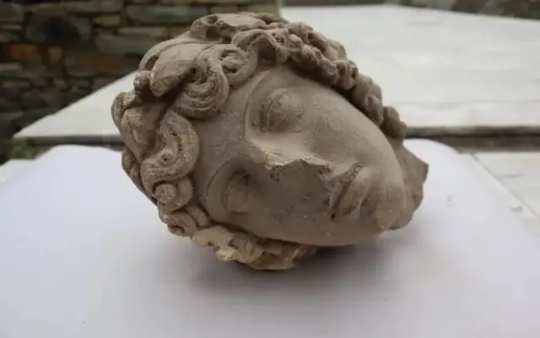
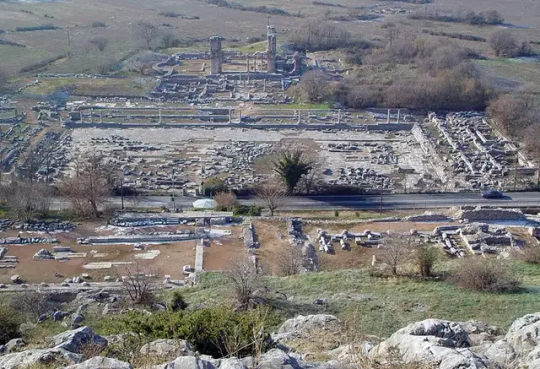
#The Marble Head of Apollo Unearthed in Greece#Philippi Kavala#marble#marble statue#ancient artifacts#archeology#archeolgst#history#history news#ancient history#ancient culture#ancient civilizations#ancient greece#greek history#greek art
213 notes
·
View notes
Text
📍Kavala,Greece 🇬🇷
The city of Kavala is built on a hillside along the Aegean coast, a cultural crossroads between East and West that has everything you could want in a destination and more. mountains, beaches, perfect cityscapes, amazing views, important monuments and sites, delicious local cuisine and amazing places to discover within a short distance.
#kavala #kavalacity #greece
🎥:@johnnyxatz #travel #tourism #air #drone #dji #summer #sea#travelingare
#lifestyle#myuploads#aesthetic#travel#travelingare#photography#architecture#reels#kavala#greece#drone
27 notes
·
View notes
Text

Holy shit city of kavala (greece) has city wide free wi-fi
7 notes
·
View notes
Text
Thessaloniki airport transfers
Arriving at Thessaloniki International Airport (Makedonia) and getting to your destination smoothly is crucial to starting your trip off on the right foot. Whether you’re heading to the bustling city center, exploring the beautiful Halkidiki region, or visiting nearby beaches, choosing a Thessaloniki airport transfer ensures a hassle-free and convenient start to your journey.
Here’s everything you need to know about Thessaloniki airport transfers, including taxi services, booking tips, costs, and benefits.
Why Choose Thessaloniki Airport Transfers?
Opting for an airport transfer from Thessaloniki Airport offers several advantages over other forms of transportation, making it one of the most popular choices for travelers.
Convenience and Time-Saving One of the biggest advantages of a Thessaloniki airport transfer is the convenience. You won’t need to worry about navigating public transport systems, managing heavy luggage, or waiting for a bus or shuttle. Simply book your ride in advance, and you’ll have a vehicle waiting for you when you arrive.
Comfort and Privacy Traveling in a private taxi or shuttle means you can enjoy the journey in comfort. No sharing with strangers, and you can relax in air-conditioned vehicles, making it a particularly good option during the warmer months when temperatures can soar.
24/7 Availability Thessaloniki Airport serves flights at all times of the day and night, and taxi transfers are available round the clock. Whether you’re landing early in the morning or late at night, you can always rely on a taxi or private transfer service to take you to your destination.
Fixed Rates and Transparency Most Thessaloniki airport transfers operate on fixed rates for popular destinations like Thessaloniki city center, Halkidiki, or Kavala, meaning you’ll know the fare upfront and won’t need to worry about metered pricing or hidden charges.
How to Book Thessaloniki Airport Transfers
Book at the Airport After your arrival at Thessaloniki Airport, you’ll find taxis available at the taxi stand outside the arrivals area. There are usually taxis ready to take passengers to various destinations. This is a convenient option if you haven’t pre-booked and don’t mind waiting in line.
Pre-Book Online To avoid waiting at the airport and ensure you have a smooth experience, you can pre-book your Thessaloniki airport transfer online through services like Rideandhire.com or other local providers. Pre-booking guarantees that a driver will be waiting for you at the arrivals hall with a sign, ready to take you directly to your destination.
Typical Costs of Thessaloniki Airport Transfers
The price of your airport transfer in Thessaloniki will vary depending on your destination, time of day, and whether you opt for a private taxi or a shared shuttle. Below are some approximate price ranges for common destinations:
Thessaloniki City Center: A taxi to Thessaloniki city center typically costs between €20 and €30. The drive is about 20–30 minutes, depending on traffic.
Halkidiki: If you’re heading to popular beach resorts like Kallithea, Nea Moudania, or Sani, taxi fares typically range from €50 to €80, and the ride will take about 40–60 minutes.
Kavala: A taxi to Kavala, a nearby city on the northern coast, usually costs between €100 and €120 and takes about 90 minutes.
Mount Athos: If you’re visiting Mount Athos (a UNESCO World Heritage site), expect to pay around €130 to €150, depending on the exact location.
Other Areas: For smaller destinations or villages around Thessaloniki, fares can range from €30 to €60.
Benefits of Thessaloniki Airport Transfers
Avoid Public Transport Hassles Public transportation options, such as buses, can be crowded and less convenient when traveling with luggage. Airport transfers eliminate the need for navigating complex transport routes, ensuring a direct and efficient ride to your destination.
Personalized Service A taxi or private transfer provides a personalized experience. The driver will take you directly to your destination, and if you have any special requests, such as a stop for groceries or sightseeing, they are usually happy to accommodate.
Local Knowledge Thessaloniki taxi drivers are experienced and familiar with the region. They can offer valuable tips about the best restaurants, attractions, and local culture, making the ride more informative and enjoyable.
Safe and Reliable Airport transfer services are typically licensed and regulated, ensuring a high level of safety and reliability. The drivers are trained professionals, and the vehicles are well-maintained to ensure a smooth and safe journey.
Tips for a Smooth Thessaloniki Airport Transfer
Confirm Your Fare If you’re taking a metered taxi, ask the driver for an approximate fare before starting the journey. For fixed-rate transfers, check the price in advance during the booking process to ensure no surprises at the end of your ride.
Have Cash Ready While many taxis accept credit cards, it’s a good idea to have cash on hand, especially for smaller taxi companies or in case your driver doesn’t have a card reader. Euros are the preferred currency in Thessaloniki, and you may also want to carry small notes for tips.
Keep Hotel Details Handy Always have the address and phone number of your hotel or destination ready for the driver, especially if you’re not familiar with the area. It helps ensure there’s no confusion during the journey.
Travel Insurance If you’ve pre-booked a private transfer, ensure the service provider has travel insurance in place. It's always better to be safe, especially when traveling abroad.
Request a Receipt Always ask for a receipt at the end of the journey. It helps with budgeting your trip, and you may need it for reimbursement or in case of any disputes.
Alternative Options to Thessaloniki Airport Transfers
If you’re not interested in a taxi transfer, here are some alternative options:
Private Shuttle Services: Private shuttle services can be a cost-effective option for families or groups. These shared services pick you up and drop you off directly at your hotel, usually for a lower price than a taxi.
Public Buses: Thessaloniki has a bus network that connects the airport with the city center. The bus from the airport to the city costs about €2, but it’s less convenient if you’re carrying a lot of luggage or traveling during peak hours.
Car Rentals: If you want the freedom to explore Thessaloniki and the surrounding areas at your own pace, consider renting a car at the airport. Rental car desks are available at Thessaloniki Airport, and driving gives you flexibility, though you may want to familiarize yourself with local driving laws.
Conclusion
Opting for a Thessaloniki airport transfer is one of the best ways to ensure a smooth and stress-free arrival in northern Greece. Whether you choose a taxi, private transfer, or shared shuttle, you’ll enjoy a comfortable and direct route to your destination without the hassle of public transportation.
To make your journey even easier, consider pre-booking your Thessaloniki airport transfer online. With a fixed price, direct route, and professional service, you can start your holiday in Thessaloniki on the right foot.
0 notes
Photo

Traveling to Kavala
To the south of Drama is the old town of Kavala, located on the coast. It takes about four hours to ride there. The journey passes through the flat Drama plain, miles of tobacco fields, and the remains of the ancient city of Philippi.
The Ruins of Philippi
The only building left in Philippi is a rundown coffee house with a muddy floor. It is a place where travelers can rest their horses and have a break. The people in the coffee house, who were Turks, didn’t know much about the city’s history. There was a step made of marble with a Roman inscription, and marble blocks were scattered around. One side of the coffee house was part of a large block of marble. This marble was likely built to honor the Romans after their victory in the Battle of Philippi in 42 BC, where Augustus and Antony defeated Brutus and Cassius. The marble had holes for tying horses. When I asked the Turks what the marble pillar meant, they looked confused and said it was built in honor of a great Turkish general!
The History of Philippi
Not much is left of Philippi. The few ruins that remain tell the story of a town that lived and thrived for about 30 centuries. The first people in the area were probably Thracians who mined gold in the nearby mountains. They built a town to protect themselves from invading tribes who wanted to steal the gold. The town, called Datus or Datum, existed as early as 11 centuries before Christ. It was a prosperous town until the 4th century BC Who we are.
The fame of the gold mines was so great that the ancient Athenians tried to take control of the town. They attempted this many times, and in 360 BC, the Thasians, encouraged by an Athenian leader named Callistrates, captured Datus and renamed it Krenides. However, the Thasians only held the town for two years before the original inhabitants fought back. They forced the Thasians to seek help from Philip of Macedon, who had long wanted to take the town. Philip used this chance to capture the town, expand it, and build beautiful structures. He renamed the city Philippi after himself. The gold mines he developed made him a lot of money, with a revenue of a thousand talents.
0 notes
Photo

Traveling to Kavala
To the south of Drama is the old town of Kavala, located on the coast. It takes about four hours to ride there. The journey passes through the flat Drama plain, miles of tobacco fields, and the remains of the ancient city of Philippi.
The Ruins of Philippi
The only building left in Philippi is a rundown coffee house with a muddy floor. It is a place where travelers can rest their horses and have a break. The people in the coffee house, who were Turks, didn’t know much about the city’s history. There was a step made of marble with a Roman inscription, and marble blocks were scattered around. One side of the coffee house was part of a large block of marble. This marble was likely built to honor the Romans after their victory in the Battle of Philippi in 42 BC, where Augustus and Antony defeated Brutus and Cassius. The marble had holes for tying horses. When I asked the Turks what the marble pillar meant, they looked confused and said it was built in honor of a great Turkish general!
The History of Philippi
Not much is left of Philippi. The few ruins that remain tell the story of a town that lived and thrived for about 30 centuries. The first people in the area were probably Thracians who mined gold in the nearby mountains. They built a town to protect themselves from invading tribes who wanted to steal the gold. The town, called Datus or Datum, existed as early as 11 centuries before Christ. It was a prosperous town until the 4th century BC Who we are.
The fame of the gold mines was so great that the ancient Athenians tried to take control of the town. They attempted this many times, and in 360 BC, the Thasians, encouraged by an Athenian leader named Callistrates, captured Datus and renamed it Krenides. However, the Thasians only held the town for two years before the original inhabitants fought back. They forced the Thasians to seek help from Philip of Macedon, who had long wanted to take the town. Philip used this chance to capture the town, expand it, and build beautiful structures. He renamed the city Philippi after himself. The gold mines he developed made him a lot of money, with a revenue of a thousand talents.
0 notes
Photo

Traveling to Kavala
To the south of Drama is the old town of Kavala, located on the coast. It takes about four hours to ride there. The journey passes through the flat Drama plain, miles of tobacco fields, and the remains of the ancient city of Philippi.
The Ruins of Philippi
The only building left in Philippi is a rundown coffee house with a muddy floor. It is a place where travelers can rest their horses and have a break. The people in the coffee house, who were Turks, didn’t know much about the city’s history. There was a step made of marble with a Roman inscription, and marble blocks were scattered around. One side of the coffee house was part of a large block of marble. This marble was likely built to honor the Romans after their victory in the Battle of Philippi in 42 BC, where Augustus and Antony defeated Brutus and Cassius. The marble had holes for tying horses. When I asked the Turks what the marble pillar meant, they looked confused and said it was built in honor of a great Turkish general!
The History of Philippi
Not much is left of Philippi. The few ruins that remain tell the story of a town that lived and thrived for about 30 centuries. The first people in the area were probably Thracians who mined gold in the nearby mountains. They built a town to protect themselves from invading tribes who wanted to steal the gold. The town, called Datus or Datum, existed as early as 11 centuries before Christ. It was a prosperous town until the 4th century BC Who we are.
The fame of the gold mines was so great that the ancient Athenians tried to take control of the town. They attempted this many times, and in 360 BC, the Thasians, encouraged by an Athenian leader named Callistrates, captured Datus and renamed it Krenides. However, the Thasians only held the town for two years before the original inhabitants fought back. They forced the Thasians to seek help from Philip of Macedon, who had long wanted to take the town. Philip used this chance to capture the town, expand it, and build beautiful structures. He renamed the city Philippi after himself. The gold mines he developed made him a lot of money, with a revenue of a thousand talents.
0 notes
Photo

Traveling to Kavala
To the south of Drama is the old town of Kavala, located on the coast. It takes about four hours to ride there. The journey passes through the flat Drama plain, miles of tobacco fields, and the remains of the ancient city of Philippi.
The Ruins of Philippi
The only building left in Philippi is a rundown coffee house with a muddy floor. It is a place where travelers can rest their horses and have a break. The people in the coffee house, who were Turks, didn’t know much about the city’s history. There was a step made of marble with a Roman inscription, and marble blocks were scattered around. One side of the coffee house was part of a large block of marble. This marble was likely built to honor the Romans after their victory in the Battle of Philippi in 42 BC, where Augustus and Antony defeated Brutus and Cassius. The marble had holes for tying horses. When I asked the Turks what the marble pillar meant, they looked confused and said it was built in honor of a great Turkish general!
The History of Philippi
Not much is left of Philippi. The few ruins that remain tell the story of a town that lived and thrived for about 30 centuries. The first people in the area were probably Thracians who mined gold in the nearby mountains. They built a town to protect themselves from invading tribes who wanted to steal the gold. The town, called Datus or Datum, existed as early as 11 centuries before Christ. It was a prosperous town until the 4th century BC Who we are.
The fame of the gold mines was so great that the ancient Athenians tried to take control of the town. They attempted this many times, and in 360 BC, the Thasians, encouraged by an Athenian leader named Callistrates, captured Datus and renamed it Krenides. However, the Thasians only held the town for two years before the original inhabitants fought back. They forced the Thasians to seek help from Philip of Macedon, who had long wanted to take the town. Philip used this chance to capture the town, expand it, and build beautiful structures. He renamed the city Philippi after himself. The gold mines he developed made him a lot of money, with a revenue of a thousand talents.
0 notes
Photo

Traveling to Kavala
To the south of Drama is the old town of Kavala, located on the coast. It takes about four hours to ride there. The journey passes through the flat Drama plain, miles of tobacco fields, and the remains of the ancient city of Philippi.
The Ruins of Philippi
The only building left in Philippi is a rundown coffee house with a muddy floor. It is a place where travelers can rest their horses and have a break. The people in the coffee house, who were Turks, didn’t know much about the city’s history. There was a step made of marble with a Roman inscription, and marble blocks were scattered around. One side of the coffee house was part of a large block of marble. This marble was likely built to honor the Romans after their victory in the Battle of Philippi in 42 BC, where Augustus and Antony defeated Brutus and Cassius. The marble had holes for tying horses. When I asked the Turks what the marble pillar meant, they looked confused and said it was built in honor of a great Turkish general!
The History of Philippi
Not much is left of Philippi. The few ruins that remain tell the story of a town that lived and thrived for about 30 centuries. The first people in the area were probably Thracians who mined gold in the nearby mountains. They built a town to protect themselves from invading tribes who wanted to steal the gold. The town, called Datus or Datum, existed as early as 11 centuries before Christ. It was a prosperous town until the 4th century BC Who we are.
The fame of the gold mines was so great that the ancient Athenians tried to take control of the town. They attempted this many times, and in 360 BC, the Thasians, encouraged by an Athenian leader named Callistrates, captured Datus and renamed it Krenides. However, the Thasians only held the town for two years before the original inhabitants fought back. They forced the Thasians to seek help from Philip of Macedon, who had long wanted to take the town. Philip used this chance to capture the town, expand it, and build beautiful structures. He renamed the city Philippi after himself. The gold mines he developed made him a lot of money, with a revenue of a thousand talents.
0 notes
Photo

Traveling to Kavala
To the south of Drama is the old town of Kavala, located on the coast. It takes about four hours to ride there. The journey passes through the flat Drama plain, miles of tobacco fields, and the remains of the ancient city of Philippi.
The Ruins of Philippi
The only building left in Philippi is a rundown coffee house with a muddy floor. It is a place where travelers can rest their horses and have a break. The people in the coffee house, who were Turks, didn’t know much about the city’s history. There was a step made of marble with a Roman inscription, and marble blocks were scattered around. One side of the coffee house was part of a large block of marble. This marble was likely built to honor the Romans after their victory in the Battle of Philippi in 42 BC, where Augustus and Antony defeated Brutus and Cassius. The marble had holes for tying horses. When I asked the Turks what the marble pillar meant, they looked confused and said it was built in honor of a great Turkish general!
The History of Philippi
Not much is left of Philippi. The few ruins that remain tell the story of a town that lived and thrived for about 30 centuries. The first people in the area were probably Thracians who mined gold in the nearby mountains. They built a town to protect themselves from invading tribes who wanted to steal the gold. The town, called Datus or Datum, existed as early as 11 centuries before Christ. It was a prosperous town until the 4th century BC Who we are.
The fame of the gold mines was so great that the ancient Athenians tried to take control of the town. They attempted this many times, and in 360 BC, the Thasians, encouraged by an Athenian leader named Callistrates, captured Datus and renamed it Krenides. However, the Thasians only held the town for two years before the original inhabitants fought back. They forced the Thasians to seek help from Philip of Macedon, who had long wanted to take the town. Philip used this chance to capture the town, expand it, and build beautiful structures. He renamed the city Philippi after himself. The gold mines he developed made him a lot of money, with a revenue of a thousand talents.
0 notes
Photo

Traveling to Kavala
To the south of Drama is the old town of Kavala, located on the coast. It takes about four hours to ride there. The journey passes through the flat Drama plain, miles of tobacco fields, and the remains of the ancient city of Philippi.
The Ruins of Philippi
The only building left in Philippi is a rundown coffee house with a muddy floor. It is a place where travelers can rest their horses and have a break. The people in the coffee house, who were Turks, didn’t know much about the city’s history. There was a step made of marble with a Roman inscription, and marble blocks were scattered around. One side of the coffee house was part of a large block of marble. This marble was likely built to honor the Romans after their victory in the Battle of Philippi in 42 BC, where Augustus and Antony defeated Brutus and Cassius. The marble had holes for tying horses. When I asked the Turks what the marble pillar meant, they looked confused and said it was built in honor of a great Turkish general!
The History of Philippi
Not much is left of Philippi. The few ruins that remain tell the story of a town that lived and thrived for about 30 centuries. The first people in the area were probably Thracians who mined gold in the nearby mountains. They built a town to protect themselves from invading tribes who wanted to steal the gold. The town, called Datus or Datum, existed as early as 11 centuries before Christ. It was a prosperous town until the 4th century BC Who we are.
The fame of the gold mines was so great that the ancient Athenians tried to take control of the town. They attempted this many times, and in 360 BC, the Thasians, encouraged by an Athenian leader named Callistrates, captured Datus and renamed it Krenides. However, the Thasians only held the town for two years before the original inhabitants fought back. They forced the Thasians to seek help from Philip of Macedon, who had long wanted to take the town. Philip used this chance to capture the town, expand it, and build beautiful structures. He renamed the city Philippi after himself. The gold mines he developed made him a lot of money, with a revenue of a thousand talents.
0 notes
Text

Statue Discovered at Greece’s Ancient Site of Philippi
A large public building with a statue depicting a young male built onto its wall, workshops, residences and thermal baths are only some of the new and glorious discoveries that have been recently unearthed at the archaeological site of ancient Philippi in northern Greece.
The ancient structures were discovered by archaeologists during ongoing works to install a fire safety and water distribution network at the sprawling site. The finds will shed even more light on the secrets and the past glory of the ancient city of Philippi, established in 356 BC by the King of Macedon and father of Alexander the Great, Philip II.
Archaeologists have long believed that Philippi was adorned by magnificent buildings and that the city had gained extraordinary fame after its establishment. During the current works at the Philippi site a geophysical method capable of detecting buried walls while guiding the pipelines without disturbing any of the antiquities was employed.

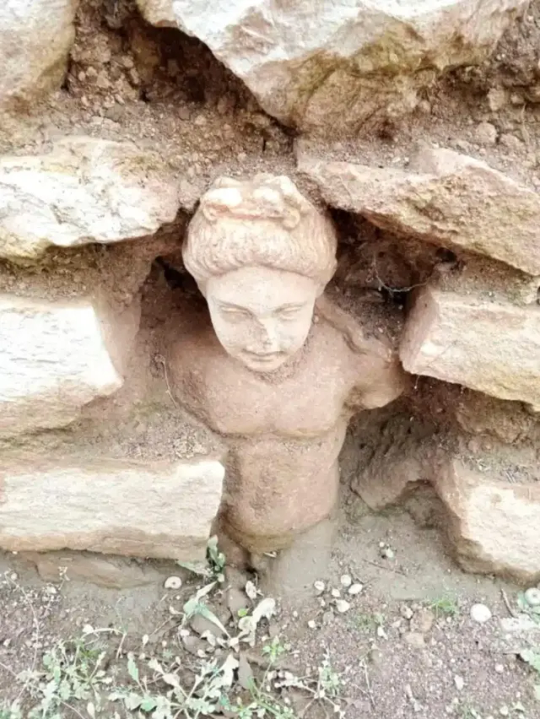

The ancient city of Philippi
Philippi was established in 356 BC by the King of Macedon, Philip II, on the site of the Thasian colony of Crenides near the head of the Aegean Sea. It developed as a “small Rome” with the establishment of the Roman Empire in the decades following the Battle of Philippi in 42 BC. Centuries later, it was abandoned after the Ottoman conquest of the 14th century. The present municipality of Filippoi is located near the ancient city’s ruins and is part of the region of East Macedonia and Thrace in Kavala, Greece.
The ancient city is currently the most vital archeological site in the region. However, the first excavations did not begin until the summer of 1914 and were soon interrupted by World War I. Between 1920 and 1937, archeologists unearthed the Greek theater, forum, baths and city walls. Following World War II, Greek archeologists returned to the site, uncovering multiple public buildings.
By Filio Kontrafouri.
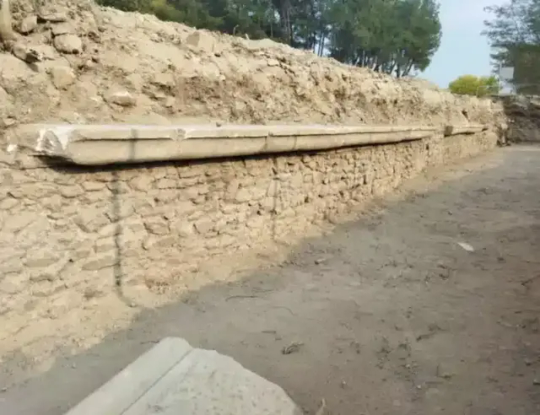
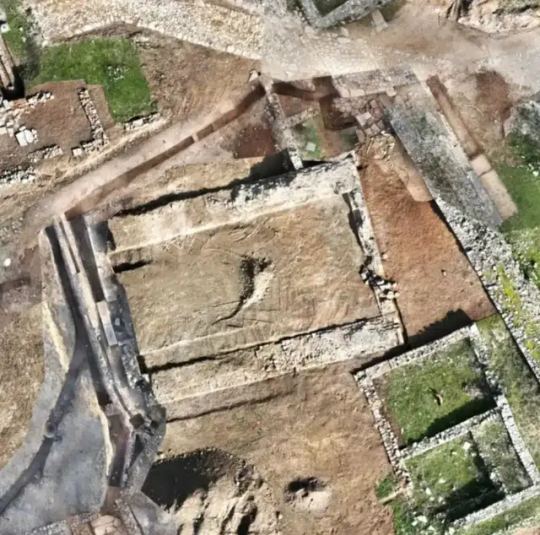
#Statue Discovered at Greece’s Ancient Site of Philippi#ancient city of Philippi#statue#ancient statues#ancient sculpture#ancient artifacts#archeology#archeolgst#history#history news#ancient history#ancient culture#ancient civilizations#ancient greece#greek history#greek art#ancient art
45 notes
·
View notes